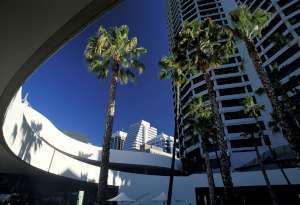Busselton leads in the regional market
The seaside city of Busselton is top amongst Western Australia’s regional markets.

The Real Estate Institute of Western Australia (REIWA) said that Busselton’s urban area grew by 5.9 per cent in the 12 months leading up to September.
SQM reports that over the last three years, the value of houses in this area has risen by 11.3 per cent.
The data house also reports that three-bedroom houses have recorded an even healthier asking price growth, with an increase of 25.7 per cent.
Chairman of the REIWA’s Busselton branch, Joe White, said although Busselton’s market is performing steadily, it is still vulnerable to price fluctuations.
“If the price is right selling periods are short, and because the stock has been clearing consistently there has been modest growth because the number of sales has given buyers confidence in paying a bit more than the previous sale of similar stock,” Mr White said.
Mr White said that one of Busselton’s most noticeable developments was its departure from a tourism-based economy.
He said that the market has become increasingly popular with FIFO workers and young families who intend to make Busselton their permanent place of residence.
“The volumes and consistency of non-seasonal sales show the market is alive and building activity is high as the population grows,” he said.
"It’s cheaper to build a new home here than in Perth but the infrastructure gets better all the time with schools and shops all within proximity to a great beachfront with a village atmosphere.”
The REIWA also reported that whilst growth was positive in other regional areas like Mandurah and Albany, places like Karratha in the Pilbara region had underperformed.
The property group said that over the last 12 months, the area’s value fell by 12.2 per cent, dropping its median price to $630,000.
REIWA’s Karratha branch chairman, Richard Naulls, said the town had experienced a slowdown in market growth over the last two years.
“Sale prices have reduced by about 40 per cent since January 2012,” he said.
“This continued for the first six months of 2014, but we have seen a stabilisation in the market since July this year which the September quarter figures support.”
Mr Naulls believes that Karratha’s correction of minus 12.2 per cent over this year is due to the fact that sellers have realised that their asking prices were too high.
“Owners have adjusted accordingly and I feel the market will continue to stabilise into 2015."